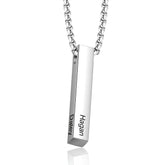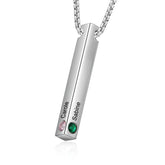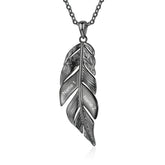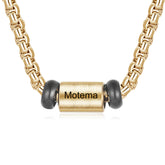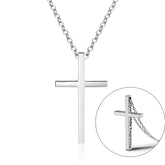Understanding the Difference: Gold Plated vs Gold Filled
A Basic Understanding: What is Gold Plating and Gold Filling?
Gold Plated and Gold Filled are terms often heard in the world of jewelry and decorative items. But, what do they really mean and how different one is from the other? Let us get to know.
Gold Plating is a process whereby thin films of gold are layered onto brass or copper compositions through the use of electricity or chemicals. It does give the item a luxurious gold appearance without the hefty price tag solid gold can carry. However, the gold layer can be extremely thin and may wear away over time.
The other hand, Gold Filled, also referred to as "rolled gold," is quite advanced. It normally supports a layer of gold bond with a base metal that is mainly brass hot pressure and heat. The quantity of gold in gold-filled items is much more than it is in gold-plated things. This makes gold-filled objects more sturdy and less prone to tarnishing as compared to plated artifacts.
Essentially, while both serve the purpose of making products attain the illustrious shine that is gold, there is a massive difference in terms of processes, durability and gold content. Any person who intends to invest on quality pieces that will last ages ought to decipher between either.

The Creation Process: How Gold Plated and Gold Filled Jewelry is Made
Though they may seem the same, gold plated and gold-filled jewelry are different depending on the processes that were used to make them. Going just a little further into how each was made brings out the artistic work in each kind of jewelry.
Gold Plating
Gold plating is a technique of depositing a thin layer of gold onto another metal. This process of the application is very cheap and needs to be precise for being effective and durable.
-
Preparation:
Before any gold electroplating can happen, the jewelry piece must be first absolutely and thoroughly cleaned. Any oils, dirt, or residues might prevent the gold from adhering properly. This step usually involves an ultrasonic cleaner, acid bath rinse finally wash in good quantity with water.
-
Electrolytic Bath:
Next, one does take a bath the cleaned jewelry item in an electrolytic solution of gold ions. Upon application of electric current, these ions do get attracted to the surface of the base metal, thus getting deposited on it. The time of submersion will determine the thickness of the gold part which still is very thin regardless of the time.
This process is commonly used to create delicate and intricate designs, such as personalized necklaces, perfect for everyday wear. -
Polishing: After plating, there is a polishing phase so as to enhance the shine on the jewelry. This not only brings out its attractiveness but also assists in smoothing little imperfections that could have occurred throughout the course of plating.
Gold Filled
Gold filling, on the other hand, is a mechanical process and the jewelry pieces or items manufactured from this process are deemed durable enough with long-staying features.
-
Layering:
Firstly, the gold alloy sheet is applied onto the core metal usually brass. The `sandwich' of metals describes how the gold alloy wraps around the base metal from the top, and bottom. This ensures that the gold is not just in the surface but runs deep within the piece.
This technique is ideal for creating durable pieces like custom bracelets that maintain their shine and strength over time."
-
Rolling:
This structured piece is then rolled several times through the use of specially designed rollers. This process further reduces its overall thickness and adding to its malleability, which is necessary for making detailed designs of jewelry.
-
Heat Treatment:
Thereafter, a crucial step entails heating the jewelry piece. The alloyed gold and the core metal melt till they fuse completely resulting in a perfect bond that cannot be easily detached. Different temperatures and time periods are critical so that the fusion is sufficiently made without raising harm or distorting the product.
-
Shaping & Finishing:
Treatment complete, the now gold filled sheet is ready for design and shape of the jewelry piece. The sheet is then worked upon by expert artisans, who transform it into various shapes, be it ring, necklace, or bracelet. Finally, the piece is detailed and polished to perfection, so that free from any defects and has that glowing shine.
Understanding these processes then underlines the value and durability differences of gold-plated and gold-filled jewelry. Both have their charm and vantages but largely dictate how long will the jewelry last, what will it look like and what it be capable to resist.
Durability & Longevity: Comparison of the Lifespan Gold Plated and Gold Filled items

Before embarking on an investment which involves jewelry or any other form of gold accessories, it is paramount to understand the concept of durability and longevity of such items. In terms of lifelong ability, there exists a very big difference between gold plated and gold filled with their manufacture process having an impact on this longevity by a huge margin. The following is a tabulated analysis comparing the two properties.
| Criteria | Gold Plated | Gold Filled |
|---|---|---|
| Thickness of Gold Layer | Usually ranges between 0.5 to 2.5 microns | Substantially thicker, often 100 times or more compared to gold plated |
| Wear and Tear | Prone to daily chipping through regular contact with a chemical that may fade off faster than expected | Highly resistant to wear, retains shine and color for a more extended period |
| Average Lifespan | 1-2 years with regular wear, longer with occasional use | Decades with proper care, often becoming heirloom pieces |
| Maintenance | Requires regular polishing so that it remains shiny, avoid contact with water and chemicals | Minimal maintenance; withstands daily activities and spottily exposed to the elements |
| Cost | Generally more affordable due to a thinner gold layer | More expensive, reflecting its superior durability and gold content |
From the table, it clearly shines through that though gold plated ones may be cost-effective at first, but the true value in terms of timelessness and durability is exhibited by gold filled jewelry. Depending upon use—whether daily wear or special occasion—it is important to make a choice after weighing these factors.
Aesthetics and Appearance: Do Gold Plated look different from Gold Filled Jewelry?
Gold plated and gold filled items are both supposed to appear like the real thing, albeit for minor aesthetic variances that could be perceived by a visiting and keen eye for detail.
Although both can exhibit a rich golden color, differences in manufacturing processes among these products may yield variations of color hue, depth, and overall luster.
The aesthetic differences are delineated via comparative analysis below.
| Aspect | Gold Plated | Gold Filled |
|---|---|---|
| Shine & Lustre | Bright golden shine at first but tends to become dull with time especially if the plating is thin. | It has a consistent, high-quality shine due to the thicker layer of gold, making it more like solid gold. |
| Depth of Color | May tend to look slightly brassy or pale depending on the thickness and quality of the gold plating it has come in. | Offers a rich gold hue that mirrors pure gold, maintaining its vibrancy over time. |
| Surface Feel | Smooth but may feel a little more "plasticky" or "coated" than solid gold or gold-filled. | Feels dense and smooth, closely emulating the texture of solid gold pieces. |
| Wear Over Time | With the wear of usage, the gold layer may eventually fade to reveal the base metal beneath, leading to a patchy effect. | A thicker layer of gold ensures that the jewelry does not lose its look even under heavy instructions. |
| Skin reaction | Discoloration of the skin can arise on gold plated stuff, especially those who can be sensitive to the base metal. | The thicker gold layer causes a barrier between the base metal and the skin resulting in no or less discoloration of the skin. |
In summary, while gold plated and gold filled jewelry both aim to mimic solid gold, gold is filled is often able to offer a more genuine perception and touch of gold with the midas effect tending to last longer.
However, aesthetics is all about personal taste and preference and so it's worth stating that individual preferences determine the coolness or otherwise between these jewelry types.
Cost Implications: Why Gold Filled Will Always Cost More Than Gold Plated
The next important factor that consumers consider while choosing between gold filled and gold plated jewelry is the difference in their costs. An understanding of the reasons behind the cost variation can naturally help consumers to make an informed choice, isn't it. Let's explore what are the major reasons for variance in the cost of both these items.
- Amount of Gold Used: With respect to gold filled jewelry, a much thicker layer of gold is used in its composition as compared to gold plated. As gold is quite precious, the more content of gold in an item is tantamount to its cost doubling or even tripling.
- Manufacturing Process: The procedure to manufacture gold-filled jewelry is a bit complex and much more laborious. The strict bonding process with pressure and heat escalates the cost factor for production as compared to electroplated jewelry.
- Durability: Gold filled items are known to last longer and wear better over time and are therefore considered as durable investments that most of the time warrant a high cost.
- Perceived Value: Also, the market perception of gold filled jewelry can lead to a marginally closer competitor to solid gold over gold plated merchandise wherefore constituting a price premium in this case.
While gold plated items may be cheaper upfront, in fact, gold filled products give the consumer a longer-lasting gold look and are often considered to be more of an investment.
Gold Content: Gold Percentage in Gold Plated vs Gold Filled
The gold content present in a jewelry piece or an accessory goes a long way in determining its value, appearance, and durability. The bottom line is that both gold plated and gold filled objects have different amounts of gold; hence this is an important factor to consider.
| Type | Gold Content Description | Approximate Percentage |
|---|---|---|
| Gold Plated | The product has electroplate of gold on it, where the thickness might be different from one piece to another. This is made on a base metal. | Less than 1% of the total metal content |
| Gold Filled | Made up of solid layers of gold that are bonded with base metals, and the thickness of this layer of gold is not less than five times thick in comparison to plating. | Typically 5% or more of the total metal content |
The difference in gold content makes gold filled items have a richer appearance of gold and quantity in them, making them a most valuable addition to jewel collections. Gold plated jewelry, on the other hand, is susceptible to wearing out and tarnishing over time since the amount of gold used in plating is less.
Skin Reaction: Is Gold Plated or Gold Filled Susceptible to Allergy?
With jewelry, common concern is with allergy reactions. Even though in its own right gold is generally hypo-allergenic, the various metals used either in combination with gold or base metals used in both gold plated and gold filled jewelries at times can be reactive to some sensitive individuals.
-
Gold Plated: In gold plated jewelry, a considerably thin layer of gold is applied over base metal and in this way people can get exposed to the metal which generally comprises nickel, copper or zinc underneath it.
Notably, nickel is an identified common allergen and could trigger skin reactions to some individuals. -
Gold Filled: Gold filled jewelry flourished in the Victorian era.
By comparison, gold plating must be 50-100 times as thick over a pure metal base to give a reliable gold color.
Consequently low possibility to the base metal come direct with the skin. However, if the base includes some substances which have potential allergens, this still puts a slight threat in relation to allergic reactions, though obviously less than what pertains in relation to items gold plated.
It's best for those with sensitive skin or known metal allergies to ensure what the exact metal composition of the jewelry is, or move into high karat solid gold pieces that are most unlikely to react.
Care and Maintenance: Tips for Keeping Your Jewelry Shining for Years
Careful care can greatly lengthen the lifespan and shine of gold plated as well as gold filled jewelry. Provided below are some personalized tips to ensure each variety looks its best:
- For Gold Plated:
- Don't come into direct contact with chemicals, like lotions, perfumes, or things such as cleaning products.
- Use a soft cloth to wipe the jewelry items after wearing them, in order to get rid of oils and dirt.
- Keep in an airtight bag or jewelry box to avoid contact with air and hence tarnishing.
- Gold Filled Storage:
- For cleaning, while more durable still avoiding abrasive materials or harsh chemicals, use a gentle jewelry cleaner or mild soap and water.
- Polish it with soft cloth so to maintain shining.
- Store it separately from other jewels so as to prevent scratches and save appearances.
With proper maintenance and careful handling, jewelries made from gold plated or gold filled can be kept beautiful for future generations.
Eco-friendliness: Environmental Impact of Gold Plated and Gold Filled

With growing anxiety over the environment, it's imperative to know how much of an ecological footprint our consumer choices will leave. This incorporates jewelry and the processes involved in making them. Let's delve into the ecologically pertaining concerns of gold plating as well as gold filling.
-
Gold Plated: Gold plating is a process termed as electroplating of a very thin layer of gold metal on the surface of a base metal.
The chemicals that are mostly used in this technique are cyanide and acids.
Though the chemicals used in this technique are very minute, these chemicals are discarded in large volumes through improper treatments which most often lead to the outbreak of environmental issues. Apart from that, the base metal extraction, especially when from sources unsustainably mined, has its environmental repercussions. -
Gold Filled: The process used to fill in gold being rich in precious metal requires more of the material.
Gold mining operations can lead to deforestation, destruction of habitat, and contamination of water sources with poisonous chemicals, particularly in non-regulated areas. However, the more gold there would be in such gold filled items, they may be more recyclable and thus cutting down to the need for a fresh raw material.
Other Applications apart from Jewelry:
Though jewelry is the most popular field where gold plating and gold filling find a global use, there are exciting applications with nearly every other industry for which such processes are required because of the attractive nature of gold.
- Electronics: Connectors, terminals, and other components gold plated are common in electronics as lack of corrosion by gold provides excellent electrical conduction.
- Dental: Gold alloys are used in some restorations of dentistryover other metals because of the hardness and biocompatibility.
- Items of Decoration: Use of gold plating can also be seen in items like cutlery, picture frames, and decorative statues to provide a luxurious finish and avoid tarnish.
- Certain components in aerospace are gold plated as it is resistance to even corrosion and wear under extreme environmental conditions.
Both gold plating as well as gold filling given the unique characteristics and their distinct benefits provided found niche uses in industries far removed from the world of jewelry underscoring the versatility and importance in contemporary manufacturing.
Recommendations: When to Choose Gold Plated and When to Opt for Gold Filled Items
In the vast world of jewelry and decorative items, it's easy to get overwhelmed by your choices between gold plated and gold filled. Let your decision rest upon a variety of factors including budget, if the piece will take any wear and tear, and personal preferences. Here are some facts:
- Budget Constraints: If your pocket is tight and you are at the crossroad to get the gold appearance without spending a huge amount, then gold plated items are your best pick. They really beautify your outlook with golden shimmer.
- Durability: Individuals who look for a longer lasting piece go for gold filled. With the presence of a thicker layer, the items last longer and are able to withstand wear and tear compared to gold plated ones.
- Sensitive skin: If you have sensitive skin or are allergic to some base metals, such as nickel, then gold-filled might be the best option for you because it lowers your probability of reacting to your skin with its thick layer regarding gold plating.
- Resale Value: Comparatively, gold filled items have a higher resale value as it comprises of substantial quantity of gold and so in the long run proves out to be more valuable.
In the end, both gold plated and gold filled have their pros. Weigh those according to your needs and preferences.
Final Thoughts: Summarizing Key Differences, Benefits, and Points for Consideration between Gold Plated and Gold Filled
One thing to be armed with while in the world of gold jewelry and ornamental items is to understand well the differences between gold plated and gold filled pieces. Generally, both provide the amazing glow that come with the gold, but there exists a distinction between them regarding how they are made, their longevity for wear, effects on cost and uses.
Well if you are exploring our site and are willing to know the variations then do get familiar with these. Know more Gold Vermeil or 12 Gold Types & Colors of a kind of Gold beyond this.
The gold plated pieces, characterized by its slender gold overlay, not only are affordable and trendy but also are favorites amongst the style enthusiasts. On the other hand, gold filled items, known for its more substantial gold layer, stand out footing by its resilience and lasting gold essence in the setup as a valuable acquisition.
With that knowledge, then you can make an informed choice that ensures the piece that you settle for, whether gold plated or gold filled, will be ideal for your taste, requirements, and lifestyle.

